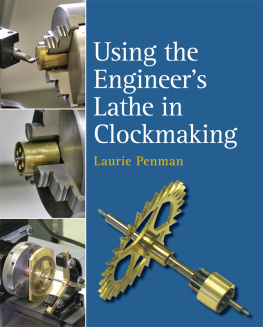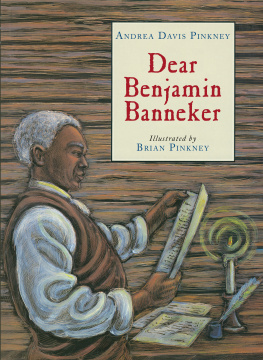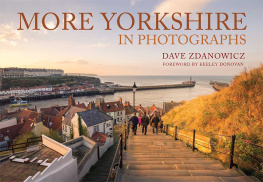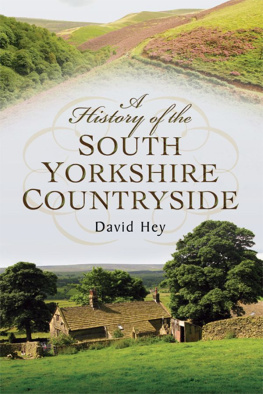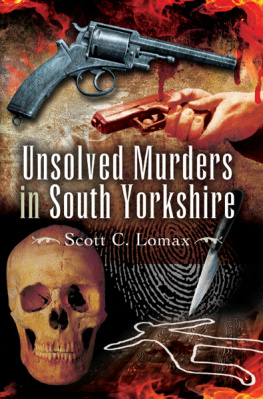The Old Clockmakers
of Yorkshire
by
N. V. Dinsdale
Copyright 2013 Read Books Ltd.
This book is copyright and may not be reproduced or copied in any way without the express permission of the publisher in writing
British Library Cataloguing-in-Publication Data
A catalogue record for this book is available from the British Library
A History of Clocks and Watches
Horology (from the Latin, Horologium) is the science of measuring time. Clocks, watches, clockwork, sundials, clepsydras, timers, time recorders, marine chronometers and atomic clocks are all examples of instruments used to measure time. In current usage, horology refers mainly to the study of mechanical timekeeping devices, whilst chronometry more broadly included electronic devices that have largely supplanted mechanical clocks for accuracy and precision in timekeeping. Horology itself has an incredibly long history and there are many museums and several specialised libraries devoted to the subject. Perhaps the most famous is the Royal Greenwich Observatory, also the source of the Prime Meridian (longitude 0 0' 0"), and the home of the first marine timekeepers accurate enough to determine longitude.
The word clock is derived from the Celtic words clagan and clocca meaning bell. A silent instrument missing such a mechanism has traditionally been known as a timepiece, although today the words have become interchangeable. The clock is one of the oldest human interventions, meeting the need to consistently measure intervals of time shorter than the natural units: the day, the lunar month and the year. The current sexagesimal system of time measurement dates to approximately 2000 BC in Sumer. The Ancient Egyptians divided the day into two twelve-hour periods and used large obelisks to track the movement of the sun. They also developed water clocks, which had also been employed frequently by the Ancient Greeks, who called them clepsydrae. The Shang Dynasty is also believed to have used the outflow water clock around the same time.
The first mechanical clocks, employing the verge escapement mechanism (the mechanism that controls the rate of a clock by advancing the gear train at regular intervals or 'ticks') with a foliot or balance wheel timekeeper (a weighted wheel that rotates back and forth, being returned toward its centre position by a spiral), were invented in Europe at around the start of the fourteenth century. They became the standard timekeeping device until the pendulum clock was invented in 1656. This remained the most accurate timekeeper until the 1930s, when quartz oscillators (where the mechanical resonance of a vibrating crystal is used to create an electrical signal with a very precise frequency) were invented, followed by atomic clocks after World War Two. Although initially limited to laboratories, the development of microelectronics in the 1960s made quartz clocks both compact and cheap to produce, and by the 1980s they became the world's dominant timekeeping technology in both clocks and wristwatches.
The concept of the wristwatch goes back to the production of the very earliest watches in the sixteenth century. Elizabeth I of England received a wristwatch from Robert Dudley in 1571, described as an arm watch. From the beginning, they were almost exclusively worn by women, while men used pocket-watches up until the early twentieth century. This was not just a matter of fashion or prejudice; watches of the time were notoriously prone to fouling from exposure to the elements, and could only reliably be kept safe from harm if carried securely in the pocket. Wristwatches were first worn by military men towards the end of the nineteenth century, when the importance of synchronizing manoeuvres during war without potentially revealing the plan to the enemy through signalling was increasingly recognized. It was clear that using pocket watches while in the heat of battle or while mounted on a horse was impractical, so officers began to strap the watches to their wrist.
The company H. Williamson Ltd., based in Coventry, England, was one of the first to capitalize on this opportunity. During the company's 1916 AGM it was noted that... the public is buying the practical things of life. Nobody can truthfully contend that the watch is a luxury. It is said that one soldier in every four wears a wristlet watch, and the other three mean to get one as soon as they can. By the end of the War, almost all enlisted men wore a wristwatch, and after they were demobilized, the fashion soon caught on - the British Horological Journal wrote in 1917 that... the wristlet watch was little used by the sterner sex before the war, but now is seen on the wrist of nearly every man in uniform and of many men in civilian attire. Within a decade, sales of wristwatches had outstripped those of pocket watches.
Now that clocks and watches had become common objects there was a massively increased demand on clockmakers for maintenance and repair. Julien Le Roy, a clockmaker of Versailles, invented a face that could be opened to view the inside clockwork a development which many subsequent artisans copied. He also invented special repeating mechanisms to improve the precision of clocks and supervised over 3,500 watches. The more complicated the device however, the more often it needed repairing. Today, since almost all clocks are now factory-made, most modern clockmakers only repair clocks. They are frequently employed by jewellers, antique shops or places devoted strictly to repairing clocks and watches.
The clockmakers of the present must be able to read blueprints and instructions for numerous types of clocks and time pieces that vary from antique clocks to modern time pieces in order to fix and make clocks or watches. The trade requires fine motor coordination as clockmakers must frequently work on devices with small gears and fine machinery, as well as an appreciation for the original art form. As is evident from this very short history of clocks and watches, over the centuries the items themselves have changed almost out of recognition, but the importance of time-keeping has not. It is an area which provides a constant source of fascination and scientific discovery, still very much evolving today. We hope the reader enjoys this book.

Preface.
THERE are many books about clocks and clockmakers ranging from Derhams The Artificial Clockmaker of 1696 to the newest Cescinsky of 1938. Of them all perhaps the best known is Brittens Old Clocks and Watches, known also to the wag as The Clocklovers Bible, or Time, Gentlemen, Please! But all the well-known books on old clocks have this in common, that their first preoccupation is with London clocks and London makers; they notice the country maker and his humbler product only in passing. This is understandable, for London was the home and centre of the best 17th and 18th century work, with good makers gathered there in such numbers that the writer feels no compulsion to go elsewhere for his material and illustrations. The London field is an immense one; indeed much still remains to be written about some aspects of London work, especially of mechanism, which has been neglected for a too minute scrutiny of cases, hands and dials.
The students absorption with London work has produced a corresponding bias on the part of the collector. For him the word Londini on a dial has been a shibboleth. A revived interest in early clocks thus canalised has resulted in a steady withdrawal from the market of the best work of the London makers of repute. The big men with the long purses have gathered in the worthwhile Tompions and Quares while the rest of us have been busy among their discards. Even the discards are scarce nowadays, and the country has been so thoroughly combed by dealers that he is an optimist indeed who dreams that some day he will find the clock of clocks lurking in some dim country cottage to be bought for the proverbial old song. It just does not happen any more, and the time is upon us when all but the most modest specimens of London work will be beyond the reach of the minor collector.



